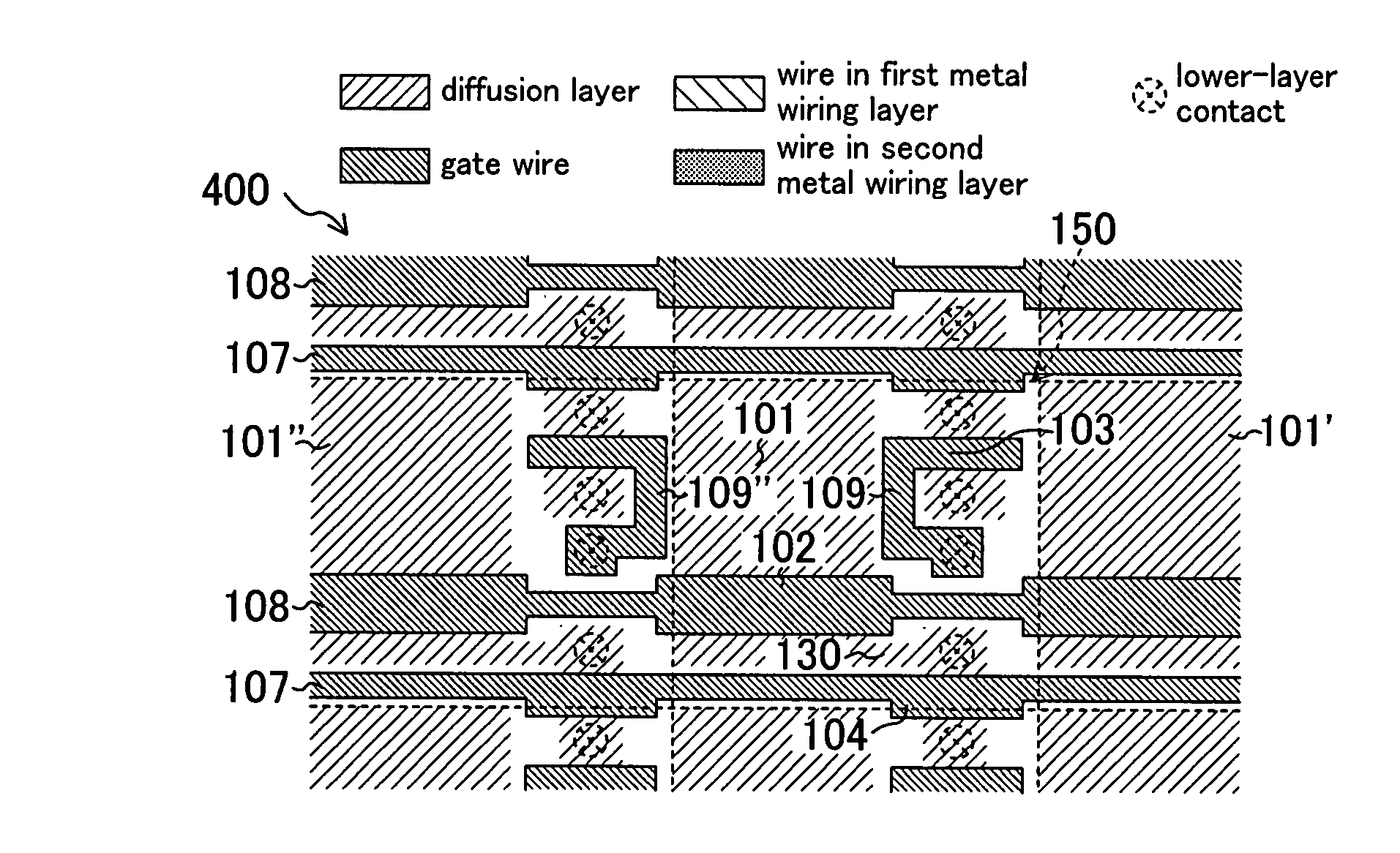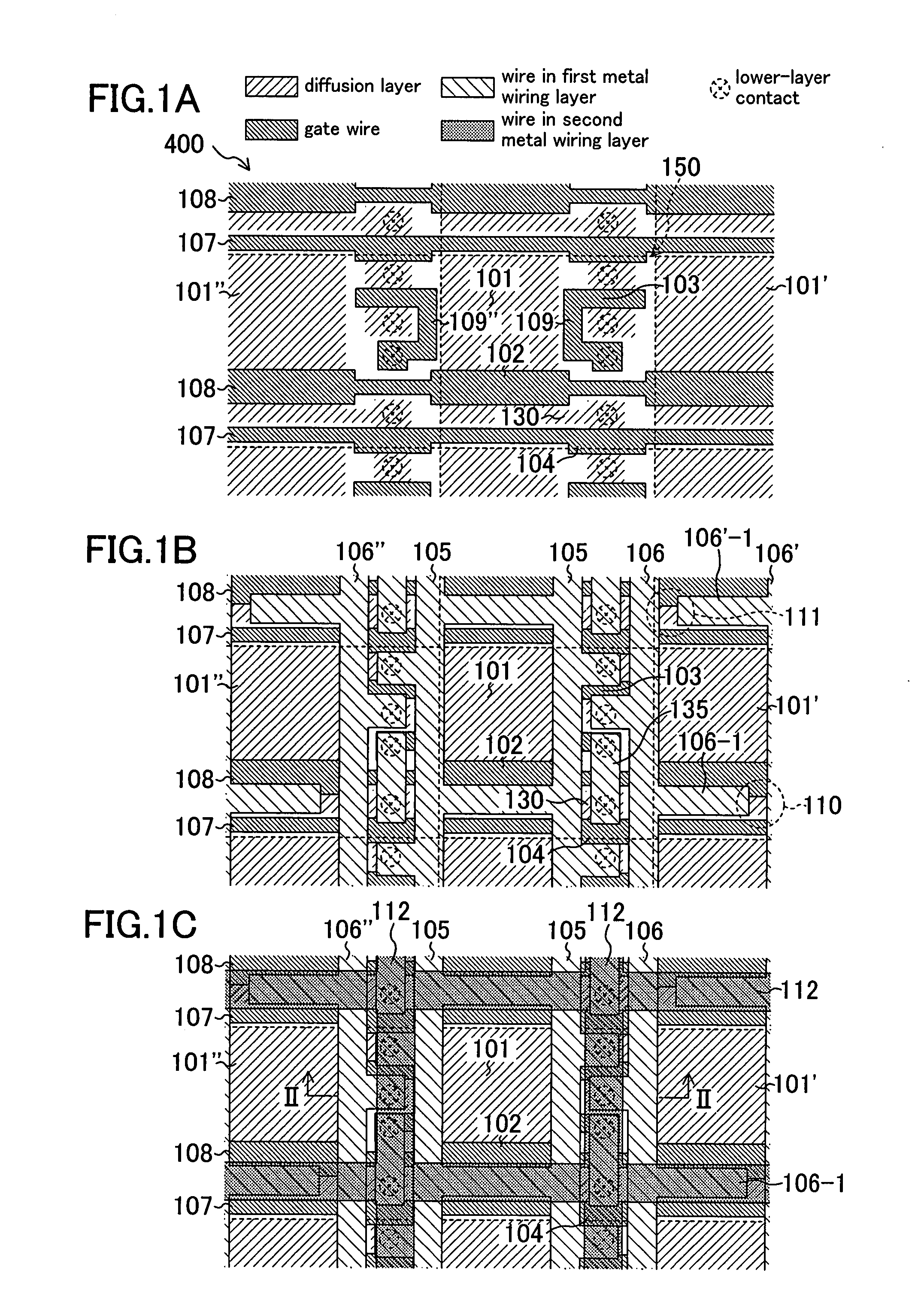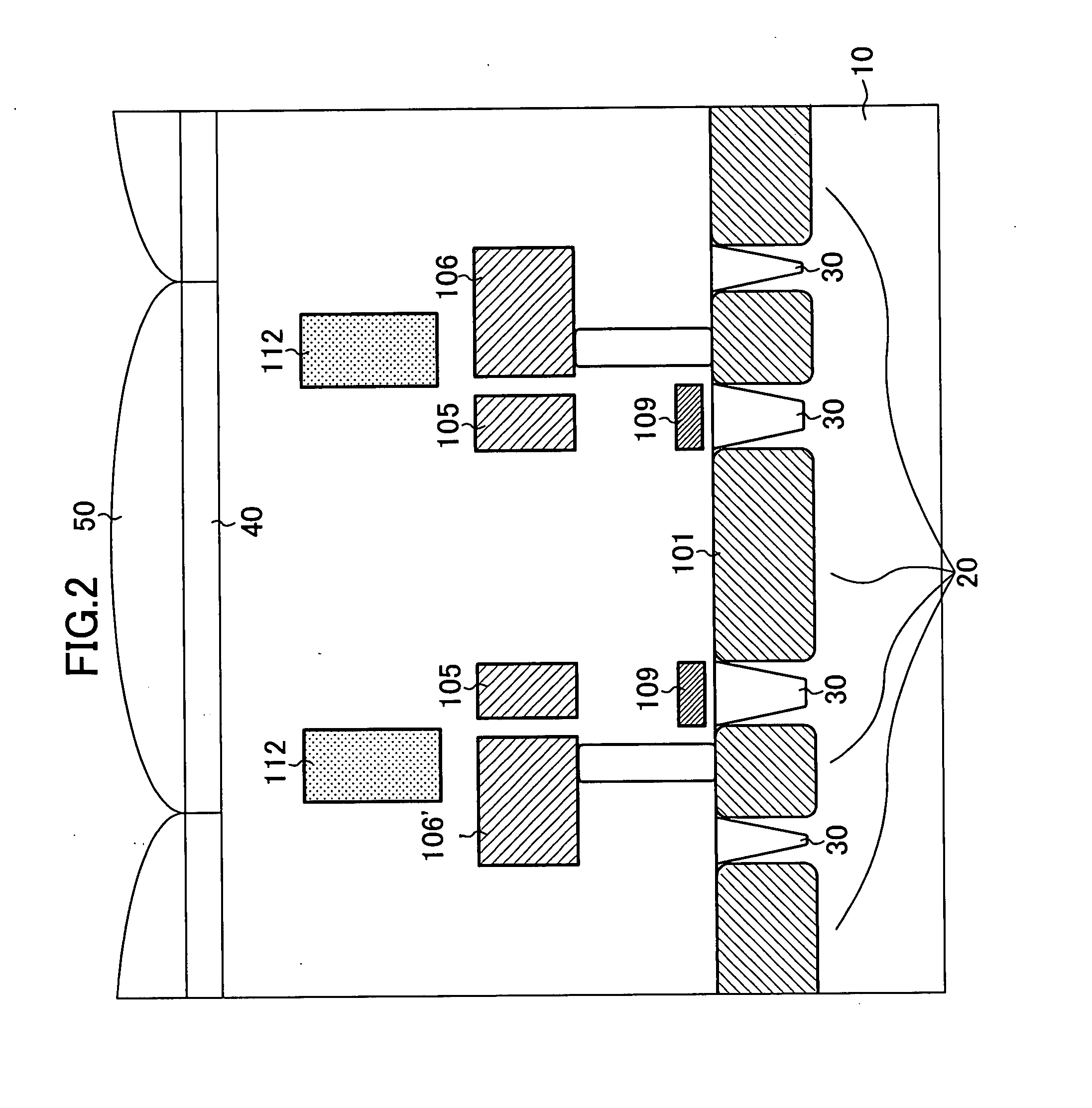Solid-state imaging device and method for driving the same
a solid-state imaging and imaging device technology, applied in semiconductor/solid-state device manufacturing, semiconductor devices, electrical devices, etc., can solve problems such as shading and irregular brightness of output images, and achieve the effect of reducing the size of the imaging apparatus comprising the solid-state imaging device and high-quality video
- Summary
- Abstract
- Description
- Claims
- Application Information
AI Technical Summary
Benefits of technology
Problems solved by technology
Method used
Image
Examples
first embodiment
[0069]FIGS. 1A to 1C are plan views illustrating a layout of a pixel array of a solid-state imaging device (MOS solid-state imaging device) according to a first embodiment of the present invention. FIG. 1A illustrates, in the pixel array, a polysilicon wiring layer, and contacts (lower-layer contacts) connecting a diffusion layer or polysilicon wires formed on a semiconductor substrate, and wires in a first metal wiring layer. FIG. 1B illustrates wires formed in the first metal wiring layer in addition to the configuration of FIG. 1A. FIG. 1C further illustrates wires formed in a second metal wiring layer in addition to the configuration of FIG. 1B. In FIGS. 1A to 1C, each portion surrounded by a dashed line is a cell 150. When one photodiode is provided in each cell as in the solid-state imaging device of this embodiment, the cell is generally called a “pixel cell”. FIG. 2 is a cross-sectional view of the solid-state imaging device of the first embodiment, taken along line II-II of...
second embodiment
[0106]FIGS. 9A to 9C are plan views illustrating a layout of a pixel array of a solid-state imaging device according to a second embodiment of the present invention. FIG. 9A illustrates a polysilicon wiring layer, and contacts connecting a diffusion layer or polysilicon wires formed on a semiconductor substrate and wires formed in a first metal wiring layer, in a pixel array. FIG. 9B illustrates the wires formed in the first metal wiring layer, and contacts (vias) connecting the first metal wiring layer and a second metal wiring layer in addition to the configuration of FIG. 9A. FIG. 9C illustrates wires formed in the second metal wiring layer in addition to the configuration of FIG. 9B. FIG. 10 is a cross-sectional view of the solid-state imaging device of the second embodiment, taken along line X-X of FIGS. 9A to 9C.
[0107]The solid-state imaging device of this embodiment is different from the solid-state imaging device of the first embodiment in a portion of the wire layout. Speci...
third embodiment
[0116]FIGS. 11A to 11C are plan views illustrating a layout of a pixel array of a solid-state imaging device according to a third embodiment of the present invention. FIG. 11A illustrates a polysilicon wiring layer, and contacts connecting a diffusion layer or polysilicon wires formed on a semiconductor substrate and wires in a first metal wiring layer, in the pixel array. FIG. 11B illustrates wires formed in the first metal wiring layer, and contacts connecting the first metal wiring layer and a second metal wiring layer, in addition to the configuration of FIG. 11A. FIG. 11C further illustrates wires formed in the second metal wiring layer in addition to the configuration of FIG. 11B.
[0117]The solid-state imaging device of this embodiment is different from the solid-state imaging devices of the first and second embodiments in a portion of the wire layout. Specifically, in the solid-state imaging device of this embodiment, each cell 350 comprises: a photodiode 301; an FD 330; a tra...
PUM
 Login to View More
Login to View More Abstract
Description
Claims
Application Information
 Login to View More
Login to View More - R&D
- Intellectual Property
- Life Sciences
- Materials
- Tech Scout
- Unparalleled Data Quality
- Higher Quality Content
- 60% Fewer Hallucinations
Browse by: Latest US Patents, China's latest patents, Technical Efficacy Thesaurus, Application Domain, Technology Topic, Popular Technical Reports.
© 2025 PatSnap. All rights reserved.Legal|Privacy policy|Modern Slavery Act Transparency Statement|Sitemap|About US| Contact US: help@patsnap.com



